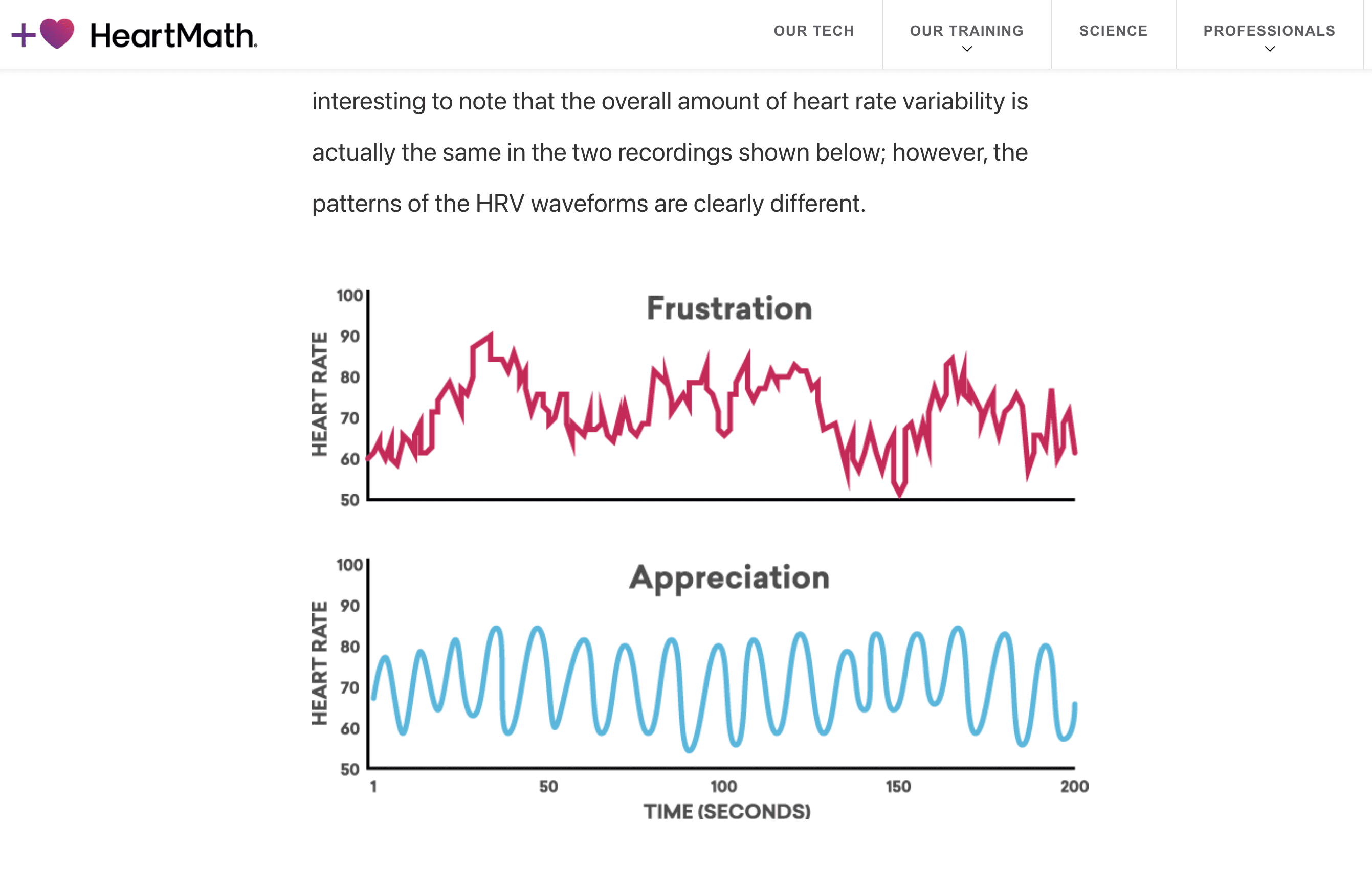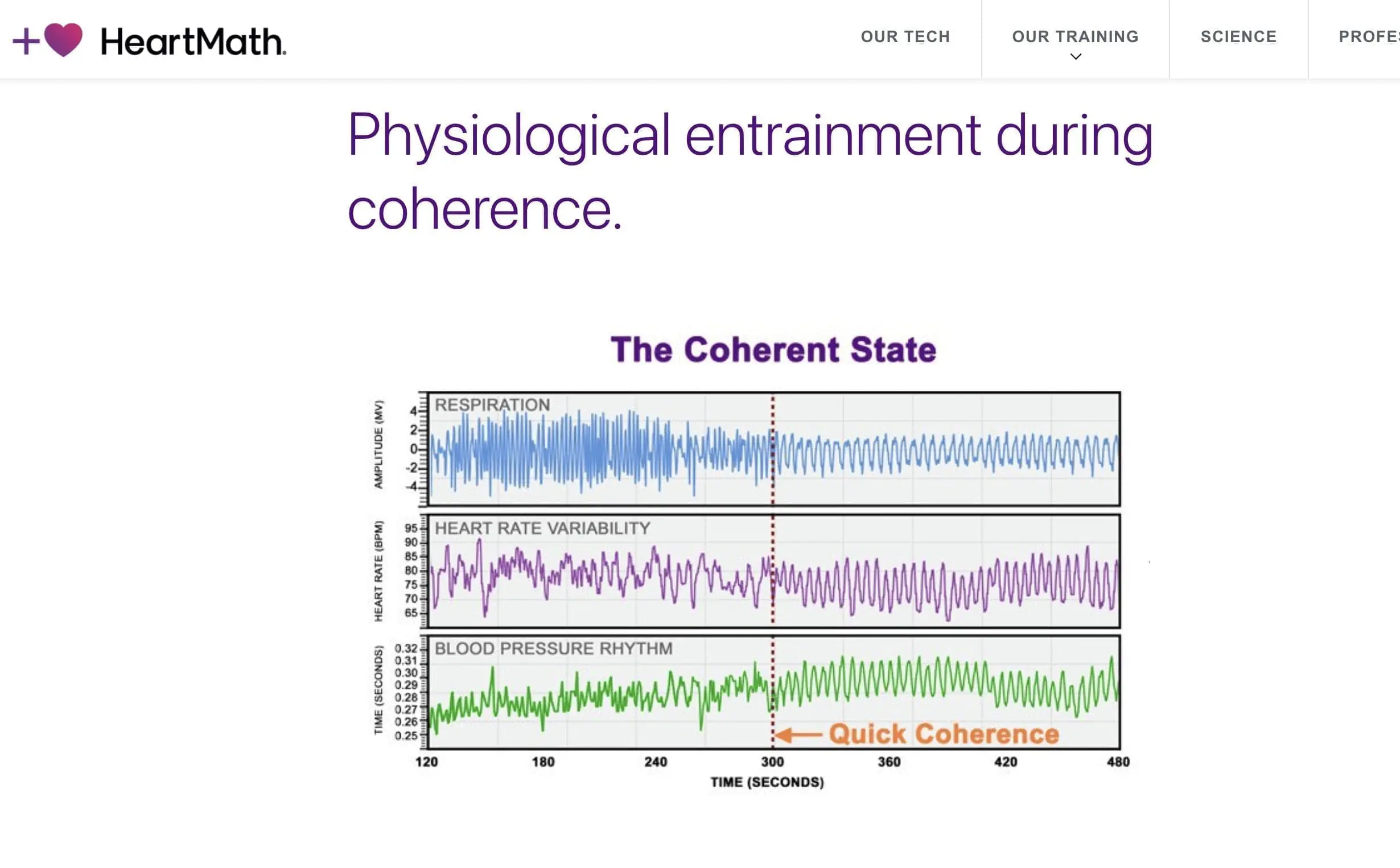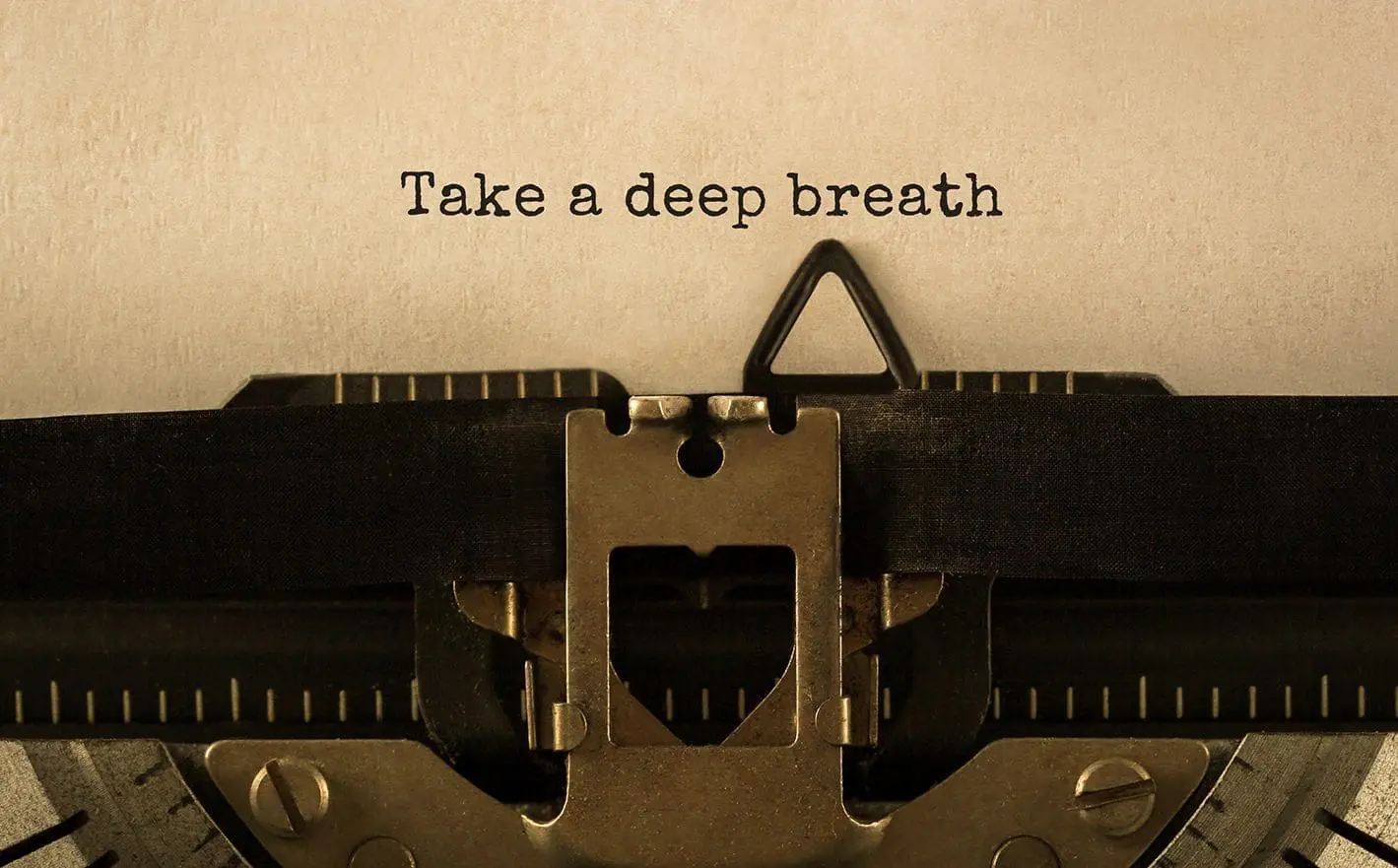I just breathed deeply for 10 minutes and I already feel like a different person.
I feel calmer, yet paradoxically more energetic and focused. My body feels significantly better, as if my cells are now vibrating differently due to the recent influx of oxygen. I can sense my body moving around in a more relaxed, deliberate, methodical manner as I walk around my house.
These changes are not subtle. They’re profound.
Every time I use breathing techniques—and inevitably remember how incredibly powerful they are—I always wonder why I let such a long period of time elapse since the last time I remembered to do them.
Have you ever had a similar experience, where you returned to a healthy habit, felt great immediately, and were dumbfounded why you still haven’t gotten around to making it a regular part of your life? This is not uncommon.
The world seems to be made of matter, and so we often tend to bias ourselves toward material-based solutions for stress and mood. Taking pills is just easier and more convenient, and we live in a society that’s obsessed with instant gratification and thus predictably mired in impatience.
And while nutritional and herbal supplementation are crucial for stress and mood support—as adaptogens like Shilajit, Ashwagandha, and Rhodiola can be absolute game-changers for the nervous system—it’s important not to overlook practices like breathwork that can radically improve our physical and mental health.
Breathing is intimately tied to emotional expression. Some have called it ‘the bridge between mind and body’ because of how powerfully it seems to link the two together.
For example, a state of suspense will make us hold our breath. A feeling of relief will make us exhale dramatically and drop our shoulders. While sobbing uncontrollably, our lungs suddenly start firing off more spastically than usual.
These changes all happen as if our brains know something we don’t about the way that breathing is essential to the expression of various emotions.
Our lungs, heart, and nervous system are all deeply interconnected.
Just as different emotional states can unconsciously alter the breath, conscious breathing can also alter our emotional states by changing the heart rhythm and inducing the nervous system to shift gears into different brainwave states.
Before we continue, though, I invite you to watch the following video and breathe rhythmically for just one minute:
Do you feel any different? If you don’t feel like breathing right now, no worries. But if you’re still on the fence, I encourage you to go back and actually try it. It’s just 60 seconds of your time.
Go ahead, give yourself a taste of what breathwork can do for you.
The Effects of Breathwork on the Heart and Nervous System
Researchers have looked into the benefits of breathwork from a variety of angles.
In particular, breathwork seems to affect the balance between the two different branches of our autonomic nervous system: the sympathetic AKA “fight-or-flight” and parasympathetic AKA “rest and digest”.
One metric that’s particularly easy to measure with regard to breathwork is Heart Rate Variability (HRV), which is based on the interaction between these two main branches of the autonomic nervous system.
HRV is a way of expressing the variation in the intervals between heartbeats and reflects the activity of the autonomic nervous system.
As breathing changes, the nervous system tends to change as well. The converse is also true, as changes in the nervous system will affect breathing. It’s a bidirectional relationship.
The sympathetic nervous system will tend to speed up heart rate whereas the parasympathetic will slow it down, so looking at an HRV graph is like looking at the way that these two opposite systems are talking to each other. It’s a bit of a push-and-pull dynamic between the two.
Various mind-body practices–including breathwork, meditation, and earthing–have also been shown to affect HRV positively.
Low HRV is associated with states of higher stress, chronic pain, cardiovascular issues, poor emotional flexibility, and inflammation, so anything that elevates HRV can be extremely beneficial for mental and physical health. It’s also been used as a marker of biological aging, as HRV, unfortunately, tends to decrease with age.
One 2010 study showed that slow abdominal breathing could lower blood pressure and enhance HRV in individuals with prehypertension. Another study from 2017 showed that a technique called resonance frequency breathing was able to increase HRV, lower blood pressure, and improve mood scores.
The Institute of HeartMath has done extensive research on HRV and the connection between the brain and the heart.
While the brain is considered the master controller of the body and thus exerts some control over heart function, the heart itself also has its own nervous system and is able to send signals back up to the brain, altering its function as well.
The official name for this “heart brain” is the Intrinsic Cardiac Nervous System (ICNS).
In addition to HRV, another metric used by HeartMath is called heart coherence. Various emotional states can easily produce changes in the heart rhythm that are easy to see on a graph:

Researchers at HeartMath have created a technique that makes use of rhythmic breathing and focusing on positive emotions called the Quick Coherence® technique.
Here you can see an immediate change at the half-way point, when the participant started applying this technique:

And here’s a 2 minute video explaining how to do the Quick Coherence® technique:
The Institute of HeartMath also sells affordable biofeedback devices that help you get into heart coherence as you breathe.
Breathwork’s Effects on Stress Hormones, Mood, and Focus
Subjective measurements have their place in measuring the effects of breathwork as well.
Psychologists make use of all kinds of different inventories to measure mood states in study participants, for example, the Measurement of Psychological Stress (MSP) and Profile of Mood State (POMS) questionnaires.
Many studies combine these subjective measurements with objective ones, such as changes in stress hormones (as well as the aforementioned HRV studies, of course).
Studies such as this one have shown that deep breathing resulted in significantly improved mood states as well as a decrease in the stress hormone, cortisol.
Another study that combined diaphragmatic breathing with biofeedback found that during 20 sessions over 8 weeks, participants in the treatment group had significantly lower cortisol, better mood, and even better performance on a test of sustained attention called the “number cancellation test”.
We shouldn’t underestimate how important breathwork might be for our immune function, particularly for those of us who are dealing with high levels of stress.
Given how disastrous stress hormones like cortisol can be for the immune system, breathwork should be considered of primary importance right now.
Chronic stress contributes to inflammation in part by driving up the production of a pro-inflammatory compound called NF-kB.
Not only does NF-kB switch on inflammation, but it also increases viral replication. In fact, viruses can upregulate NF-kB so as to help themselves reproduce faster within our cells.
The 4-7-8 Technique: a Fast Way to De-Stress and Fall Asleep Faster
Over the last several thousand years, humans have no doubt employed a wide variety of breathing techniques to achieve different states of consciousness. Various traditions, such as Buddhism and Hinduism, have made particular use of controlled breathing.
If you’re just getting started with breathwork, simplicity is key. Many modern breathing techniques are based primarily on the number of seconds that you inhale and exhale for, with minimal attention on other components such as visualization or the use of mantra.
One of the most profoundly powerful yet easy breathing techniques for relaxing the mind and body is the 4-7-8 technique.
If you or a loved one has never done a breathing exercise and are looking for somewhere to start that will help you calm down quickly, this technique is the perfect place to start.
Popularized by Dr. Andrew Weil, the 4-7-8 technique is extremely simple:
1. Breathe in to the count of 4
2. Hold your breath to the count of 7
3. Exhale to the count of 8
4. Ideally, repeat for at least 2 minutes
The best thing about 4-7-8 is that it works FAST. Most people feel a change within the first minute. This is a technique I often use in order to reduce excessive thinking and help myself fall asleep faster at night.
Some folks have a hard time holding their breath, and so I often suggest that people start with an even more simplified version of 4-7-8 which skips the holding of the breath entirely. This is simply called the 4-8 breathing technique.
According to proponents of the 4-7-8 and its variants, the most essential aspect of the technique is not the exact numbers, but rather the ratio between the inhalation and exhalation, namely that the latter is twice the length of the former. This is what induces your parasympathetic nervous system to activate, getting you out of sympathetic overdrive and reducing excess brain activity.
In other words, one could breathe in for 3 seconds, and out for 6, or breathe in for 5 seconds and out for 10. As long as the exhalation is about twice the length of the inhalation, this will signal your brain to calm down.
Here’s an extremely simple video with a ball that moves up and down a hill at a 4-8 interval:
Water, Whiskey, and Coffee
Yoga instructor Lucas Rockwood teaches three different breathing techniques for various situations, labeling them ‘water breathing’, ‘whiskey breathing’, and ‘coffee breathing’.
Water Breathing: because water is something that we can drink in all situations, water breathing is essentially an even-breathing technique in which the inhalation and exhalation are both for 4 seconds. This is similar to the technique that HeartMath uses, although—unlike the Quick Coherence® technique—it does not include the additional recommendation of focusing on specific positive memories or emotions.
Whiskey Breathing: as the name implies, this style of breathing has a calming effect, and is in fact the same thing as the 4-8 technique.
Coffee Breathing: as you might imagine, this technique is stimulating, and thus more appropriate to use in the mornings in order to wake the nervous system up. Coffee breathing is significantly different from other breathing techniques in that it consists of rapid bursts of inhalation and exhalation, each lasting less than a second.
If you’d like to see the TEDx talk hin which Lucas explains all three techniques, you can view it here.
If Only Breathwork Was Mandatory
It’s amazing how many thousands of hours of education we receive from kindergarten through 12th grade, and that none of them in any way help us understand the breath and how we can regulate our emotions by controlling it.
Given how easy and effective these techniques are, and the research demonstrating their positive health effects, it’s odd that so few of us know hardly anything about them, that they haven’t become a larger part of our society.
Although the idea of breathwork often conjures up images of people wearing tie-dye T-shirts or white robes and Mala beads, controlled breathing exercises are in and of themselves simply powerful techniques with proven efficacy that anyone can use to great effect.
Max Strom, a prominent breathwork teacher, has said the following during one of his TEDx talks:
“Navy SEALS use breathwork to help them focus and calm before they go into battle. Now Navy SEALS are not new age, cuddly people. Navy SEALS will only use technologies that work. They will not use anything else.”
He makes an excellent point. The military would not use anything that could not produce highly reliable results or was simply based on the placebo effect. They’re far too pragmatic and empirical for that.
Mr. Strom also likes to mention in his lectures how funny it is that medical science has for some time now endorsed breathing techniques like Lamaze for pregnant women, acknowledging how helpful it is to reduce pain and anxiety during labor, but for some arbitrary reason still rarely recommends it for anything else.
The world is an increasingly chaotic place, and we need all the tools and techniques we can get in order to remain calm, centered, and effective during such a tumultuous time.
Want to commit to a month of daily breathwork? Here’s a great way to get started:
1. Either download one of the many breathwork apps available or simply bookmark any of the free YouTube videos available (such as the ones in this article).
2. Tell your phone to remind you, for the next month, to breathe daily for 5 minutes. You can eventually do more, but at first, 5 minutes is ideal as it shouldn’t seem too daunting, but feel free to make it even shorter if you like.
If you can manage to do just 5 minutes a day for a month, you’ll be well on your way to integrating breathwork into your life, such that you’ll remember to use it anytime you need it.
If breath control were a mandatory class in elementary school, the world might be a much better place.
In a culture in which our emotional reactivity and distractibility are often used against us, as is the case with various kinds of digital media that vie for our attention, breathwork is an act of rebellion.
Be a rebel. Start learning how to breathe consciously. You won’t regret it.







